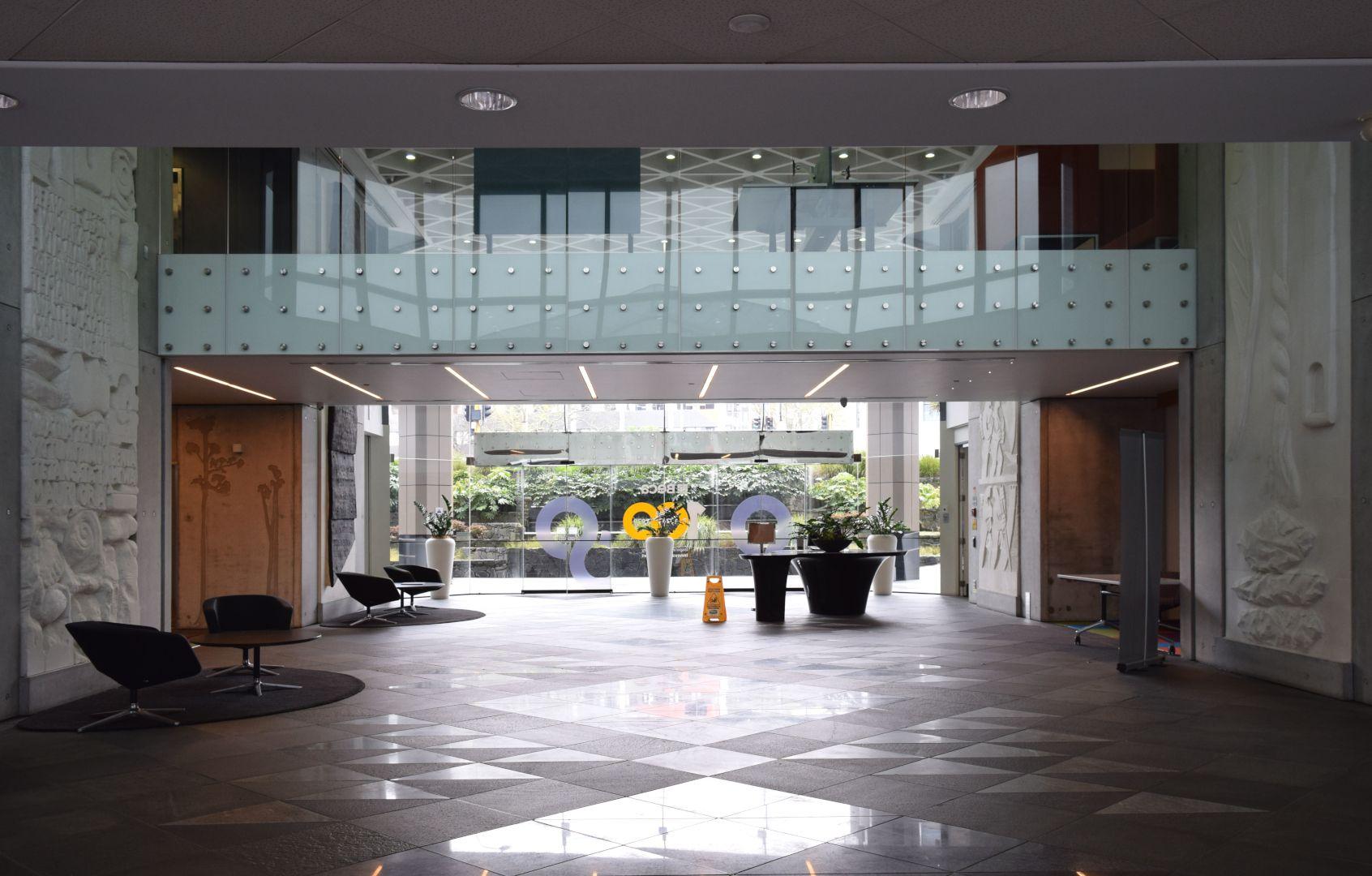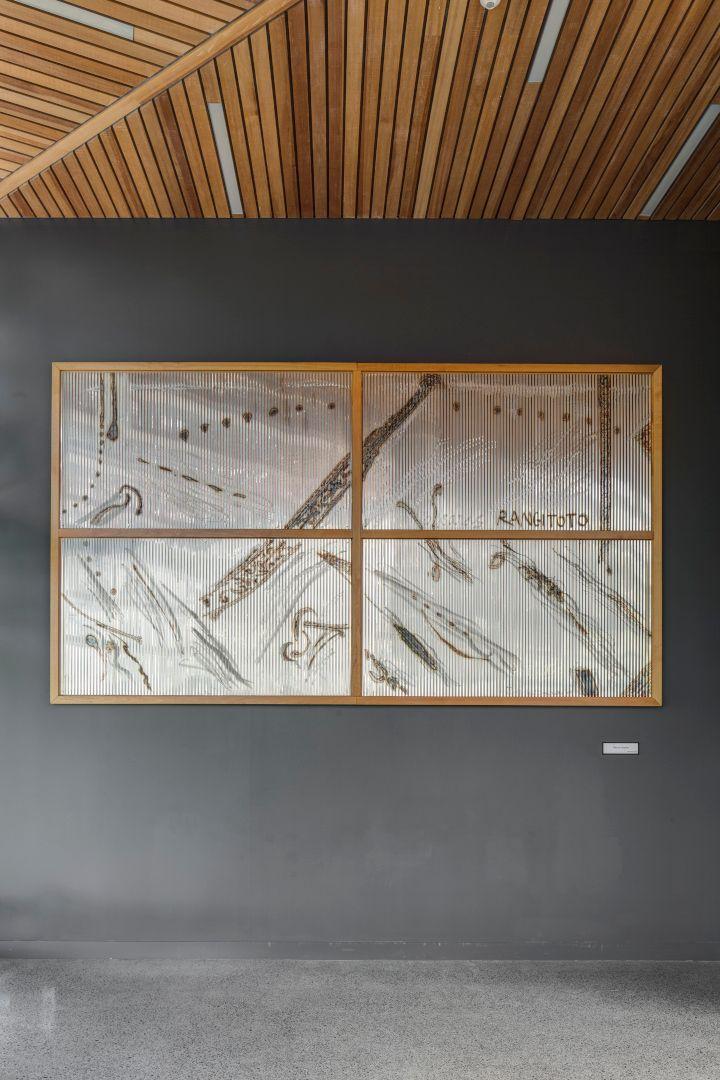Towards Rangitoto
Ralph Hōtere
Type
- Mural
Medium
- Wood
- Stainless steel
- Paint
Dimensions
- H2440 x W4540mm (four panels, each H1220 x W2270mm)

Ralph Hotere,’Towards Rangitoto’ (1990), Māngere Arts Centre, Tāmaki Makaurau Auckland.
Image: Sam Hartnett, courtesy Auckland Council, c.2012




- DETAILS
- MAP
Description
This large stainless corrugated steel work with tawa timber, marked
with burnishing and heat, is one of six works that were commissioned by the Auckland Regional Council (ARC) for their purpose-built building at 21 Pitt St. Five of the works remain in situ–presumably due to their scale, weight and integration into the structure of the building–however this (more portable) work was moved from the building when the ARC was amalgamated into the Auckland Council super-city on 1 November 2010.
When first installed the work was blessed by Takutai Wikiriwhi who advised that, if being moved to any other place of exhibition, the artwork should travel within sight of the waters of the Waitemata in order to preserve its mauri. Auckland Council notes that, in 2012, a whakamoemiti was performed by Glenn Wilcox for the removal of the artwork from the ARC building before it was relocated to the Māngere Arts Centre. Notably, its new location is adjacent to a window that looks out towards Rangitoto Island itself.
As Jonathan Mane-Wheoki writes, “Towards Rangitoto is a rarity amongst Ralph Hōtere’s artworks. It is perhaps the only work in his entire output that specifically references the Auckland landscape”.
At the time of their unveiling, the works were considered by NZ Herald art writer Richard Dale to be “very successful examples” of what he considered to be “well sited artworks”, further commenting that, together “the five works at the ARC sustain a complex series of interactions, a connection to the land, to heritage, be it Maori or, in O’Connor’s case, Irish, and thus to an overcoming of displacement and a reclamation of history, culture and spirit” (NZ Herald, 14 June 1990, p.2). Four of the wall sculptures face each other in pairs, framing the foyer space, while the Hotere was installed at the far wall facing the entrance.
“The participation of Auckland architect Rewi Thompson was also sought, to ensure that the interiors reflected a sense of unity in diversity. He developed a consistent set of guidelines within which a selection of New Zealand artists and sculptors from all local cultures could contribute works suitable for the building. A theme of “Fire and Water” was adopted as particularly appropriate to the Auckland region, referring to its volcanic history and its water surrounded character. Thompson was responsible for the tiled floor in the entrance lobby which depicts a mat incorporating images of mountains, headlands and volcanoes of the region.”
Source: Peter Shaw, ‘Unity in diversity’, New Zealand home and building, Oct/Nov, 1990, pp. 136-139
The full set of works is:
- Selwyn Muru, ‘The Sentinels’ (1990)
- Rewi Thompson, Untitled [ARC Building] (1990) (floor tile design)
See also:
- Peter Shaw, ‘Unity in diversity’, New Zealand Home and Building, Oct/Nov 1990, pp.136-139
- Richard Dale, ‘Narrowing gap between art and life’, NZ Herald, Thurs June 14, 1990, Section 2, p.2
- Florence Spong, "Hotere Comes Home", Manukau Courier, 14 Sept 2012
- Jonathan Mane-Wheoki, “Ralph Hōtere: Towards Rangitoto”, essay produced for the Mangere re-siting, June 2013
